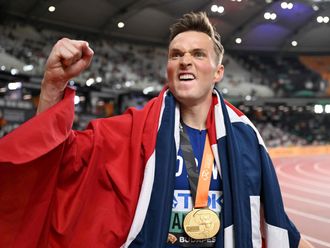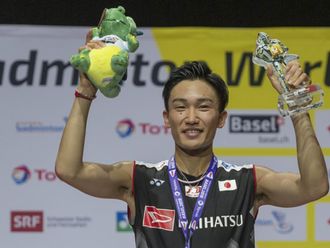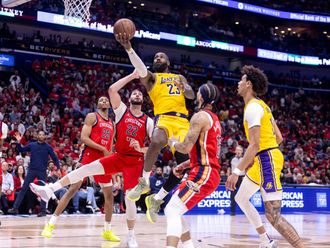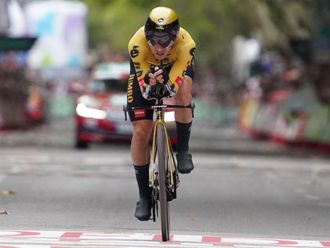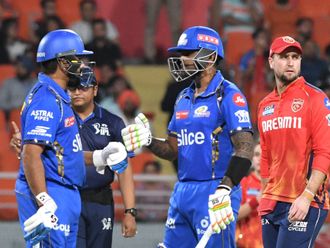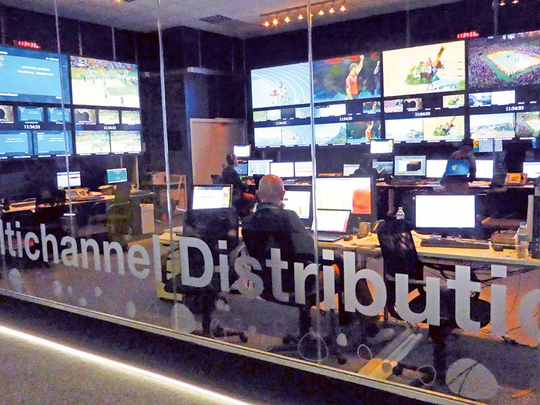
Rio de Janeiro: For a sports fan, there is no time like the Olympic Games to feast on an endless bouquet of events — each to his or her own. There is no simpler way to pleasure than playing the couch potato as your television switches seamlessly between swimming, diving, handball, fencing, et al.
Ever wondered how does it all come together? A visit to the hub of the Olympic Broadcasting Services (OBS), a part of the International Broadcast Centre (IBC) which is set up at every Olympics venue now, gave a peek into this fascinating world during a visit to Rio 2016 last week.
It’s like a fortress that one walked into, past a two-tier security check, as guests of Panasonic Corporation, the Japanese electronic giants who have been official partners of the Olympic Games since 1992. A brave, new world opens up as one makes his way through the dark corridors of the gigantic studios — where production teams of national broadcasting corporations of as many as 69 countries go through their chores silently, with the concentration of scientists.
OBS provides the video and audio feeds to the rightholders throughout the world — employing a workforce of more than 7,000 people at their base for more than a month.
“Each Olympics sees a quantum leap in terms of technology of recording and telecast. The Rio 2016 is being filmed in the 4K technology — which reduces pixellation during telecast to a minimum and gives more clarity to the viewer,” says Anthony Peter, Director of Corporate Communications of Panasonic Marketing Middle East and Africa FZE (PMMAF). As the official worldwide partners in the audio and visual equipment category, Panasonic plays a major role as providers of the audio visual equipment for the broadcasters — from camera recorders, projectors to LED large screen display systems and the works.
As the broadcasting arm of International Olympic Committee (IOC), OBS provides the video and audio feeds to the rightholders throughout the world — employing a workforce of more than 7,000 people at their base for more than a month. The Summer Olympics, alongwith the Paralympics, which follows, is set to witness a staggering 2,800 hours of live competition being beamed and 456 hours of Olympics news being aired.
As the Olympics grew bigger and the IOC took to coporatising their set-up, the IBC was first set up for the 1964 Tokyo Olympics, where the Games will be going back in four years’ time. In Rio, the IBC was located at the heart of Barra Olympic Park — home to a cluster of venues alongwith the main press centre and the Games Village — while the National Broadcasting Corporation (NBC) of the US set up a second outdoor studio at the famous Copacabana, which acted as the venues of beach volleyball and triathlon.
Elaborating on their role as a key partner for the Olympic movement for 25 years now, Peter said apart from providing the full line-up of equipment technological solutions for both the Summer Games and Paralympics, their research and development continues to bring a novelty factor to each Games.
“During the London Olympics four years back, we had worked with the IOC and OBS to deliver the first-ever 3D live Olympic Games — bringing 200 hours of live 3D coverage. We had supplied the HD video equipment to the IBC to achieve full HD content distribution at the venues and across the world. At the London Olympic Park, we had offered fans and athletes a chance to experience the Games as if they were inside the stadia,” the official said.
In another first at Rio, Panasonic signed up with the IOC and the International Paralympic Committee (IPC) to become an ‘Official Ceremony Partner’ — which saw them providing turn-key visual solutions including system design, projection mapping and technical operations to the opening and closing ceremonies of both Games.


